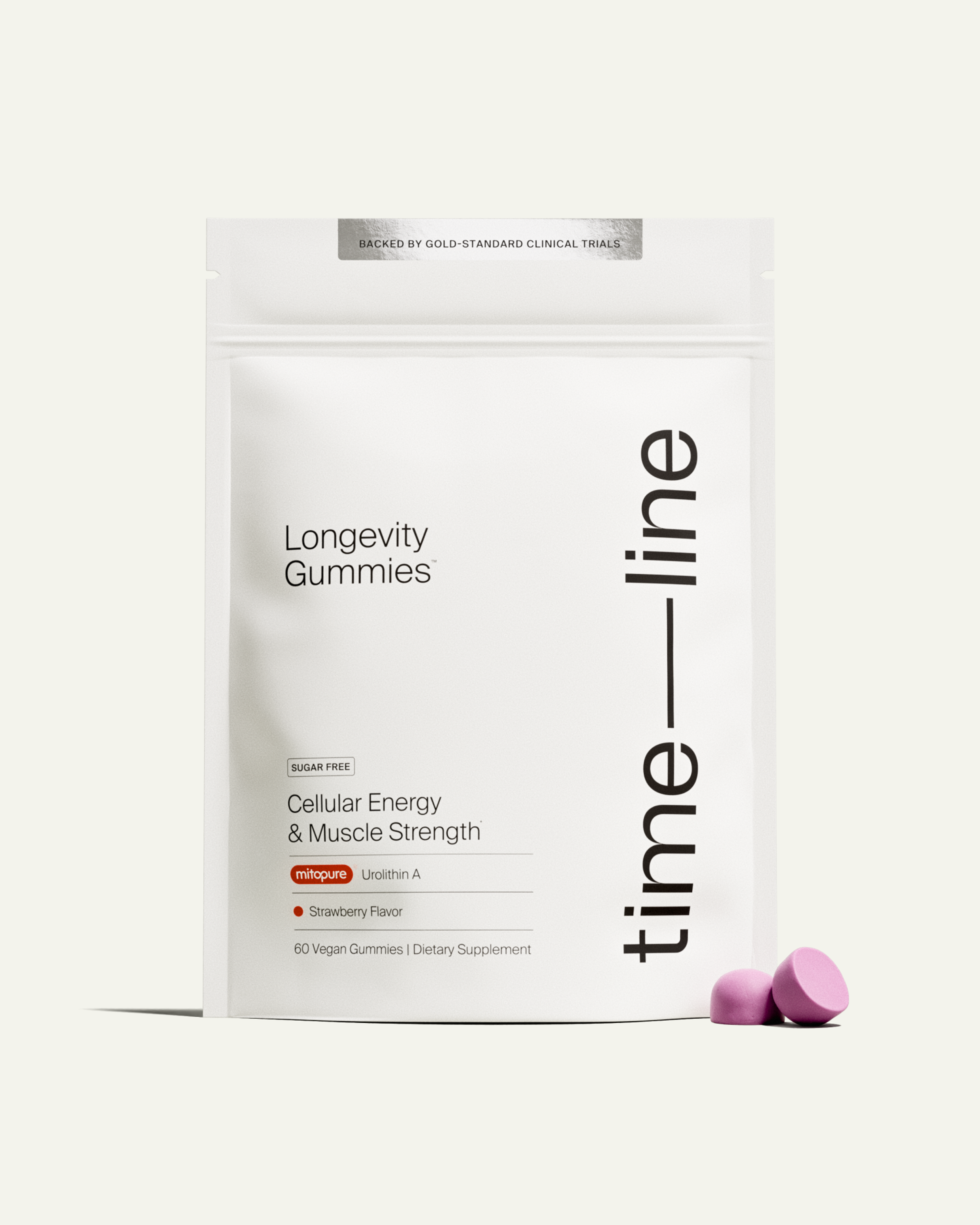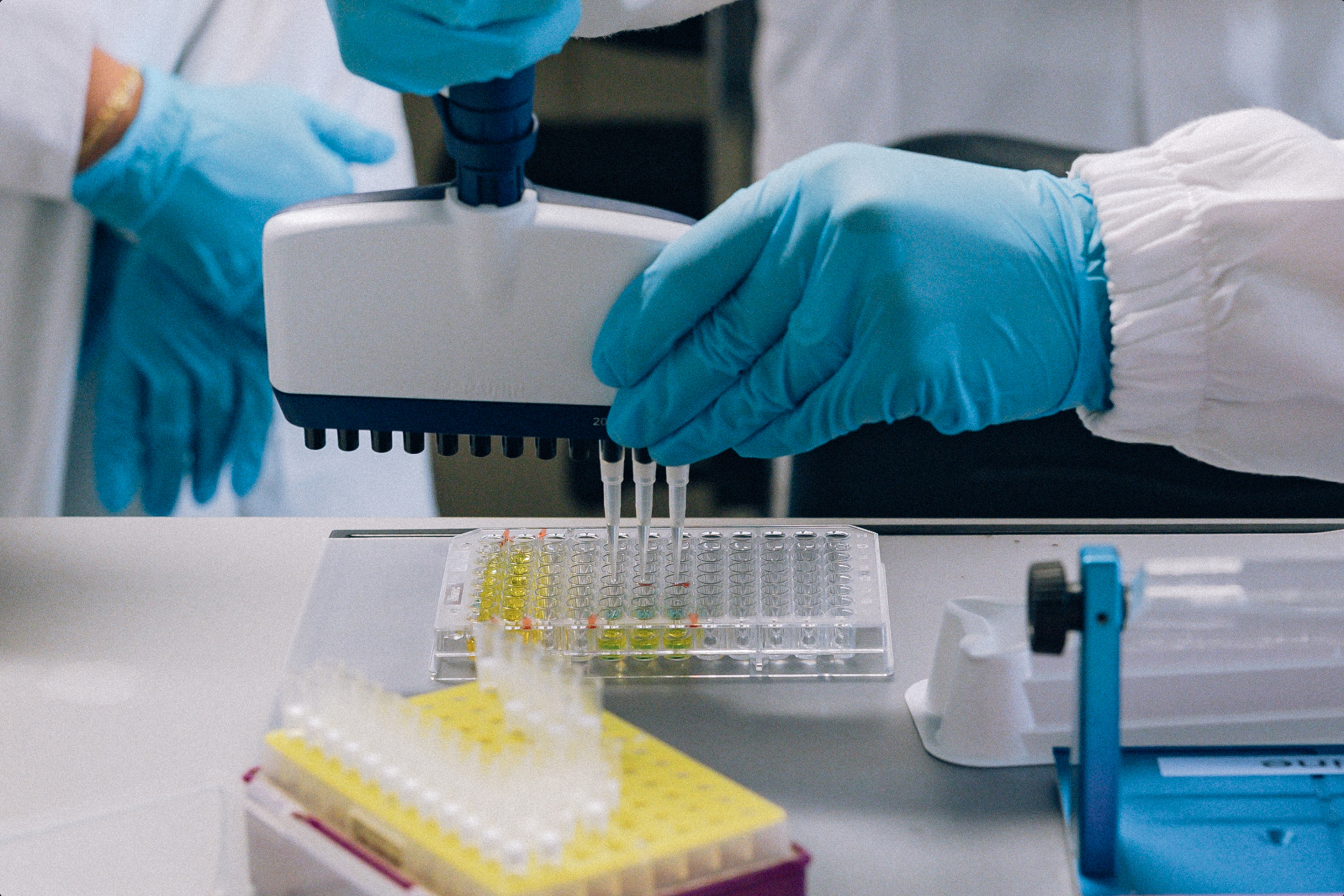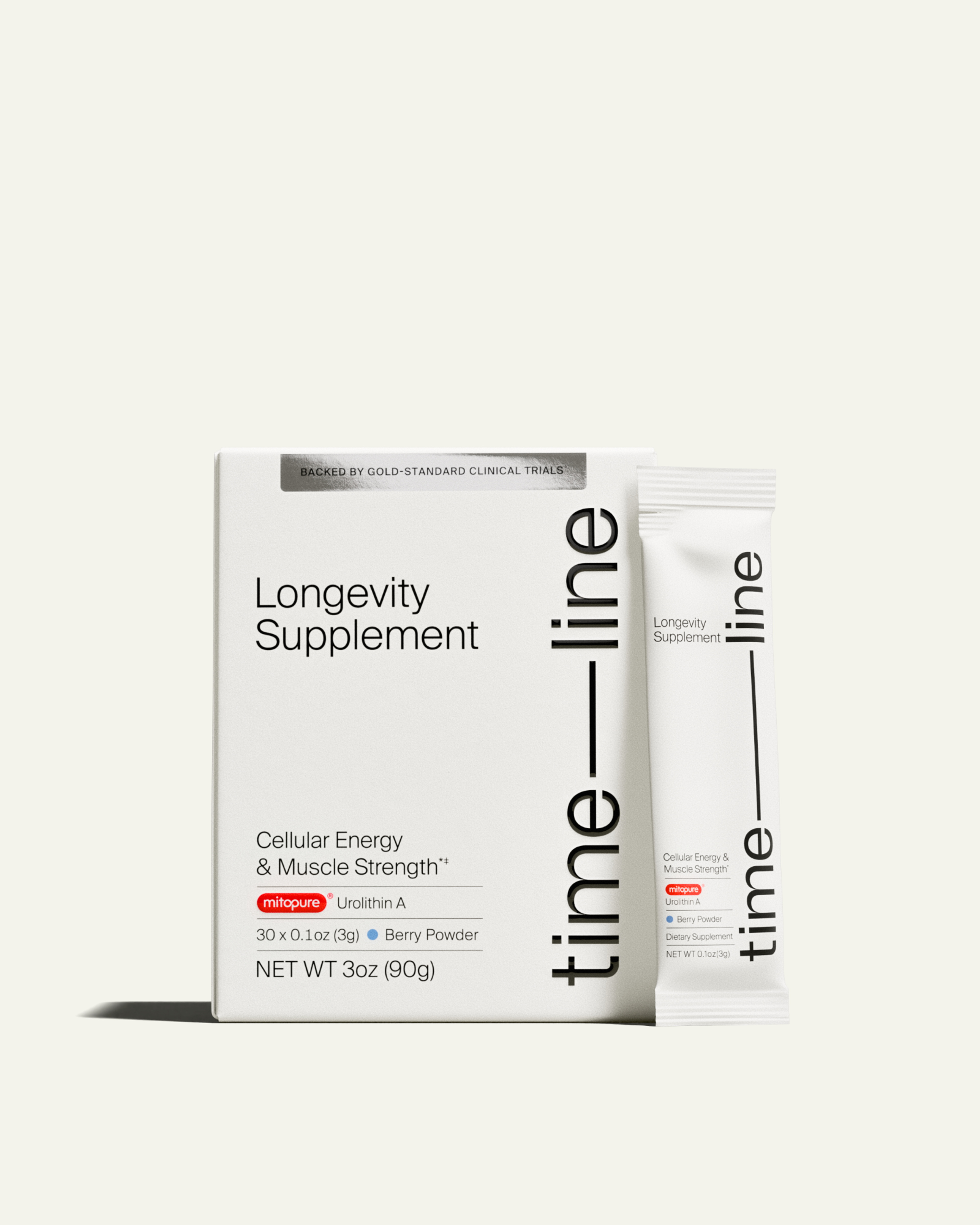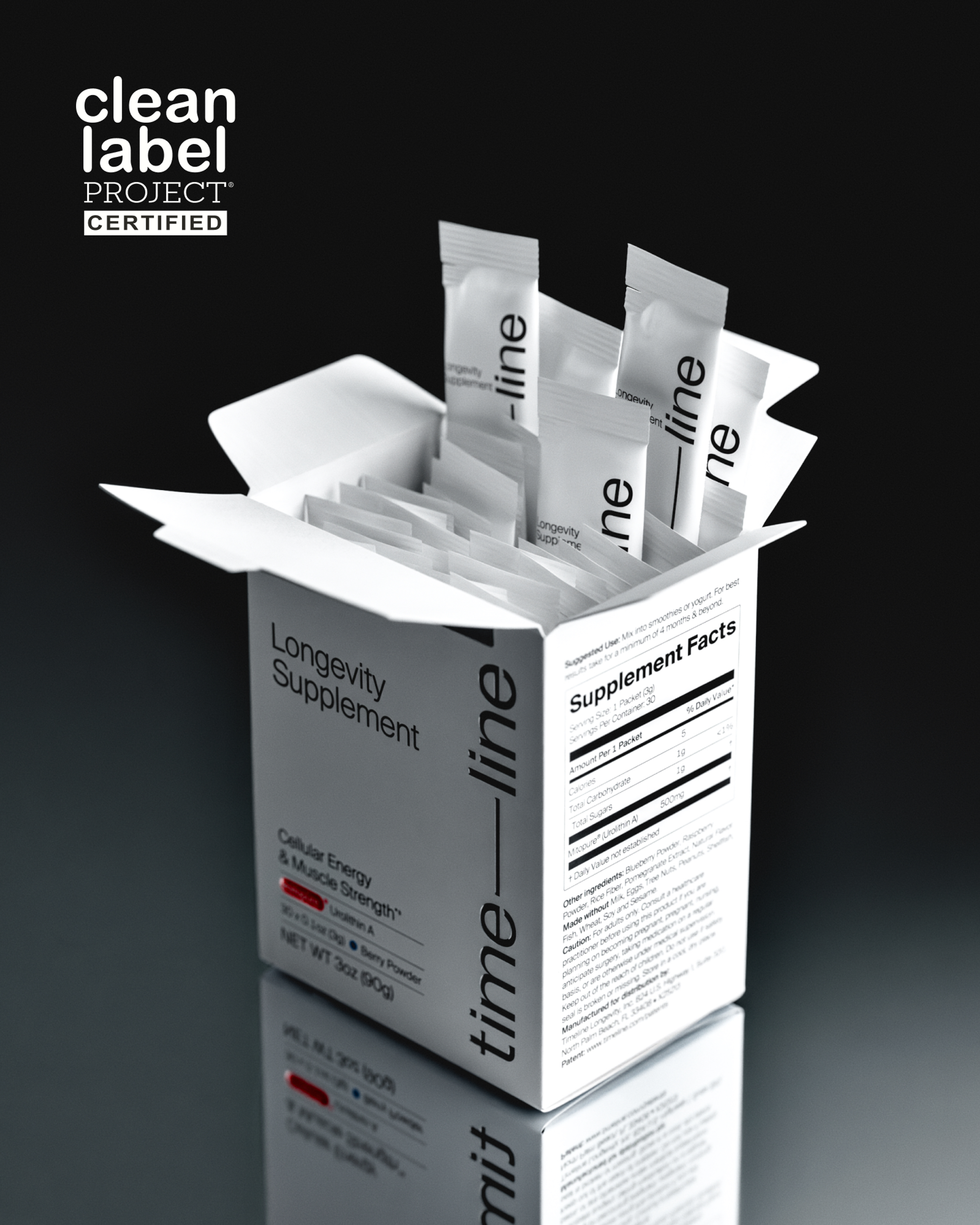How to get rid of zombie cells for longevity
Zombie cells are damaged cells that stop multiplying but don’t die. Learn their connection to aging and how to get rid of them naturally.

What to know
Zombie cells (senescent cells) are damaged cells that don’t die but accumulate in the body and can lead to inflammation.
As we age, our ability to remove zombie cells declines, which can contribute to accelerated aging.
One reason for the accumulation of these zombie cells is defective mitochondria, which are responsible for necessary cell recycling processes.
Fasting, exercise, and natural compounds are being studied for their role in cell senescence.
How to kill zombie cells: Unlocking the secrets of cellular senescence and aging
To age gracefully and maintain our health, we must understand the inner workings of our cells, particularly when changes in those inner workings can threaten our vitality. Enter zombie cells, scientifically known as senescent cells.
Senescent cells are cells that have lost the ability to do their primary function and can no longer divide. They live in a kind of "standby" mode, which is why they’ve been informally termed zombie cells.[1]
So, are zombie cells bad? While senescence is a natural process in the body involved in various stages across the lifespan, issues can occur when these cells accumulate.[2]
The accumulation of these “undead” cells doesn’t just give them a haunting name, it can wreak havoc on the body, leading to inflammation and accelerated aging. Understanding them is half the battle. Armed with the right knowledge, foods, supplements, and fasting techniques, we can combat these cellular zombies and pave the way for lasting wellness.
This article is for informational purposes only and is not intended to replace the guidance from a medical professional. Always speak to your doctor first before starting any new diet or supplements.
What are zombie cells?
As the name implies, zombie cells are cells that are defective but still alive. A zombie cell results from a phenomenon called cellular senescence, whereby the normal process of cell division in the body ceases.
This process is one of the hallmarks of aging, and science is discovering more and more about the role it plays in aging cells and the tools we can use to halt or slow down senescence.[3]
Cell senescence occurs in response to cellular stressors or damage, ensuring that potentially harmful cells don't continue to divide and proliferate[4]. These cells then cease to multiply and remain alive but dysfunctional.
This is not an ideal scenario, as you want your body to be able to just get rid of these damaged cells, not hold onto them. These zombie cells that stick around also release molecules that may trigger inflammation associated with aging.
This is why learning how to kill zombie cells or remove senescent cells may help support longevity.

Senescent Cells aka Zombie Cells cause accelerated aging and inflmation
What is the connection between zombie cells and aging?
According to the National Institute on Aging, removing senescent cells from the body becomes less efficient as we age. Thus, zombie cells tend to accumulate with aging, and they also accelerate aging when too many stick around.[5]
Senescent cells can be formed when there is DNA damage and telomere shortening [6]and are closely tied to mitochondrial dysfunction and disabled mitophagy.

How to get rid of zombie cells naturally
Fortunately, there are ways you can get rid of zombie cells naturally. Exercise, caloric restriction, and natural compounds may be able to help. Let’s explore each method and how they work.
Fasting
Fasting has become a mainstay as a way to improve health because it directly impacts many of the hallmarks of aging. Intermittent fasting activates several biological pathways, including those that can delay senescence.[7]
Additionally, fasting can trigger a cell-recycling process called autophagy, which helps our body remove damaged cells, including senescent cells[8].
You may be wondering how long you need to fast to kill zombie cells. It is still unclear the optimal length of time to fast in order to stimulate autophagy, but research suggests that at least 24 hours may be needed.[9]
Exercise
Exercise is widely recognized for its myriad health benefits, and studies suggest that it also plays a role in modulating cellular senescence. A recent study demonstrated that a 12-week exercise program was able to reduce biomarkers associated with cell senescence in older adults.[10]
This beneficial effect of exercise is believed to arise from enhanced autophagy, improved immune clearance of senescent cells, and a reduction in the pro-inflammatory factors secreted by these cells, commonly referred to as the senescence-associated secretory phenotype (SASP).[11]
Natural compounds
Research has identified natural compounds that can slow cell senescence, and as a result, supplements that kill zombie cells are entering the market. Let’s review what supplements have the most promise:
- Quercetin: This polyphenol is found in fruits and veggies, tea, and wine, and several preclinical trials have shown it has promise as a senolytic compound. [12]
- Resveratrol: Found in grapes and red wine, this natural compound may be able to slow down cell senescence in cells of the blood vessels.[13]
- Curcumin: As an active component of turmeric, curcumin has been studied for its anti-oxidant and anti-inflammatory properties, and there is some evidence to suggest that it may act as a senolytic compound. [14]
- ECGC: The phytochemical epigallocatechin gallate (EGCG) found in green tea may be able to slow cell senescence through the modulation of several pathways involved in this process.[15]
- Urolithin A: Urolithin A is a postbiotic nutrient, meaning our gut microbiome makes it after we ingest polyphenols in foods like pomegranates, berries, and nuts. Preclinical trials suggest that Urolithin A may be able to positively impact cell senescence.[16]
Zombie cells and mitochondrial decline
Senescence and mitochondrial function are intrinsically linked in the context of aging and cellular health. As cells age, mitochondrial function declines, leading to reduced energy production, increased production of reactive oxygen species (ROS), and potential DNA damage. This mitochondrial dysfunction can act as a trigger for cellular senescence.[17]
In turn, senescent cells further exacerbate mitochondrial dysfunction by releasing inflammatory and oxidative factors. This mutual exacerbation creates a feedback loop where mitochondrial decline promotes cellular senescence and vice versa.[18]
It stands to reason that improving the quality and quantity of mitochondria could play a role in slowing down the development of senescent cells.
Mitopure’s role in cellular health
Mitopure®, which contains a key ingredient called Urolithin A, has been clinically proven to trigger mitophagy, the crucial mitochondrial recycling process.[19]

Mitopure Gummies
4.7 · 715 reviews
A strawberry-flavored dose of cellular energy
Urolithin A is a postbiotic, and we require a healthy gut microbiome to make it. Many people can’t produce UA directly from food; thus, taking a supplement or applying it topically to target skin cells provides you with a direct dose of this beneficial compound.[20]
Take control of zombie cells in the body
Taking control of the zombie cells in the body can support longevity and whole-body health. Fasting, exercise, and natural compounds are natural ways to slow cell senescence and can help you with living an overall healthy lifestyle.
Authors

Author
Dietitian-Nutritionist, and Health Content Writer

Reviewed by
Lead Regulatory Affairs & Scientific Manager Alliances at Timeline
References
- ↑
He S, Sharpless NE. Senescence in Health and Disease. Cell. 2017 Jun 1;169(6):1000-1011. doi: 10.1016/j.cell.2017.05.015. PMID: 28575665; PMCID: PMC5643029.
- ↑
Does Cellular Senescence Hold Secrets to Healthier Aging? National Institute on Aging. Published July 13, 2021. Accessed September 29, 2023. https://www.nia.nih.gov/news/does-cellular-senescence-hold-secrets-healthier-aging (https://www.nia.nih.gov/news/does-cellular-senescence-hold-secrets-healthier-aging)
- ↑
López-Otín C, Blasco MA, Partridge L, Serrano M, Kroemer G. Hallmarks of aging: An expanding universe. Cell. 2023 Jan 19;186(2):243-278. doi: 10.1016/j.cell.2022.11.001. Epub 2023 Jan 3. PMID: 36599349.
- ↑
Di Micco, R., Krizhanovsky, V., Baker, D. et al. Cellular senescence in ageing: from mechanisms to therapeutic opportunities. Nat Rev Mol Cell Biol 22, 75–95 (2021). https://doi.org/10.1038/s41580-020-00314-w
- ↑
Does Cellular Senescence Hold Secrets to Healthier Aging? National Institute on Aging. Published July 13, 2021. Accessed September 29, 2023. https://www.nia.nih.gov/news/does-cellular-senescence-hold-secrets-healthier-aging (https://www.nia.nih.gov/news/does-cellular-senescence-hold-secrets-healthier-aging)
- ↑
Gallage, S., & Gil, J. (2016). Mitochondrial Dysfunction Meets Senescence. Trends in Biochemical Sciences, 41(3), 207–209. https://doi.org/10.1016/j.tibs.2016.01.005 (https://doi.org/10.1016/j.tibs.2016.01.005)
- ↑
Liu S, Zeng M, Wan W, Huang M, Li X, Xie Z, Wang S, Cai Y. The Health-Promoting Effects and the Mechanism of Intermittent Fasting. J Diabetes Res. 2023 Mar 3;2023:4038546. doi: 10.1155/2023/4038546. PMID: 36911497; PMCID: PMC10005873.
- ↑
Liu S, Zeng M, Wan W, Huang M, Li X, Xie Z, Wang S, Cai Y. The Health-Promoting Effects and the Mechanism of Intermittent Fasting. J Diabetes Res. 2023 Mar 3;2023:4038546. doi: 10.1155/2023/4038546. PMID: 36911497; PMCID: PMC10005873.
- ↑
Federico Pietrocola, Yohann Demont, Francesca Castoldi, David Enot, Sylvère Durand, Michaela Semeraro, Elisa Elena Baracco, Jonathan Pol, Jose Manuel Bravo-San Pedro, Chloé Bordenave, Sarah Levesque, Juliette Humeau, Alexis Chery, Didier Métivier, Frank Madeo, M. Chiara Maiuri & Guido Kroemer (2017) Metabolic effects of fasting on human and mouse blood in vivo, Autophagy, 13:3, 567-578, DOI: 10.1080/15548627.2016.1271513 (https://doi.org/10.1080/15548627.2016.1271513)
- ↑
Englund DA, Sakamoto AE, Fritsche CM, Heeren AA, Zhang X, Kotajarvi BR, Lecy DR, Yousefzadeh MJ, Schafer MJ, White TA, Atkinson EJ, LeBrasseur NK. Exercise reduces circulating biomarkers of cellular senescence in humans. Aging Cell. 2021 Jul;20(7):e13415. doi: 10.1111/acel.13415. Epub 2021 Jun 8. PMID: 34101960; PMCID: PMC8282238.
- ↑
Zhang X, Englund DA, Aversa Z, Jachim SK, White TA, LeBrasseur NK. Exercise Counters the Age-Related Accumulation of Senescent Cells. Exerc Sport Sci Rev. 2022 Oct 1;50(4):213-221. doi: 10.1249/JES.0000000000000302. Epub 2022 Jul 1. PMID: 35776782; PMCID: PMC9680689.
- ↑
Hwang HV, Tran DT, Rebuffatti MN, Li CS, Knowlton AA. Investigation of quercetin and hyperoside as senolytics in adult human endothelial cells. PLoS One. 2018 Jan 9;13(1):e0190374. doi: 10.1371/journal.pone.0190374. PMID: 29315311; PMCID: PMC5760026.
- ↑
Farhadnejad H, Emamat H, Zand H. The Effect of Resveratrol on Cellular Senescence in Normal and Cancer Cells: Focusing on Cancer and Age-Related Diseases. Nutr Cancer. 2019;71(7):1175-1180. doi: 10.1080/01635581.2019.1597907. Epub 2019 Apr 7. PMID: 30955382.
- ↑
Chen Z, Wu Y, Lin Q, Cai J, Liu X, Liang Y. Nutrition Interventions of Herbal Compounds on Cellular Senescence. Oxid Med Cell Longev. 2022 Apr 27;2022:105925
- ↑
Kumar R, Sharma A, Kumari A, Gulati A, Padwad Y, Sharma R. Epigallocatechin gallate suppresses premature senescence of preadipocytes by inhibition of PI3K/Akt/mTOR pathway and induces senescent cell death by regulation of Bax/Bcl-2 pathway. Biogerontology. 2019 Apr;20(2):171-189. doi: 10.1007/s10522-018-9785-1. Epub 2018 Nov 19. PMID: 30456590.
- ↑
Giménez-Bastida, J. A., Ávila-Gálvez, M. Á., Espín, J. C., & González-Sarrías, A. (2020). The gut microbiota metabolite urolithin A, but not other relevant urolithins, induces p53-dependent cellular senescence in human colon cancer cells. Food and Chemical Toxicology, 111260. doi:10.1016/j.fct.2020.111260 10.1016/j.fct.2020.111260
- ↑
Ghosh-Choudhary SK, Liu J, Finkel T. The role of mitochondria in cellular senescence. FASEB J. 2021 Dec;35(12):e21991. doi: 10.1096/fj.202101462R. PMID: 34758157; PMCID: PMC8720272.
- ↑
Ghosh-Choudhary SK, Liu J, Finkel T. The role of mitochondria in cellular senescence. FASEB J. 2021 Dec;35(12):e21991. doi: 10.1096/fj.202101462R. PMID: 34758157; PMCID: PMC8720272.
- ↑
Liu S, D’Amico D, Shankland E, et al. Effect of Urolithin A Supplementation on Muscle Endurance and Mitochondrial Health in Older Adults: A Randomized Clinical Trial. JAMA Netw Open. 2022;5(1):e2144279. doi:10.1001/jamanetworkopen.2021.44279
- ↑
Singh, A., D’Amico, D., Andreux, P.A. et al. Direct supplementation with Urolithin A overcomes limitations of dietary exposure and gut microbiome variability in healthy adults to achieve consistent levels across the population. Eur J Clin Nutr 76, 297–308 (2022). https://doi.org/10.1038/s41430-021-00950-1
Disclaimer
The information in this article is for informational purposes only and should not be taken as medical advice. Always consult with your medical doctor for personalized medical advice.

·
Nutrition·
Studies·








